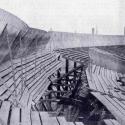 | Ibrox Stadium (Glasgow – 1902): A wooden terrace collapsed during a Scotland vs England international leading to the death of 26 people. The incident led to the prohibition of wooden scaffold type terraces in favour of solid earth banking. |
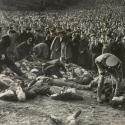 | Burnden Park (Bolton – 1946): When Stoke’s Sir Stanley Matthews came to visit Burnden Park for an FA Cup tie, an estimated crowd of 85,000 showed up at a stadium that could hold considerably less. When the crowd pressed forward on the far-over-capacity embankment, two metal crush barriers broke leading to a crush that killed 33 fans and injured another 400. |
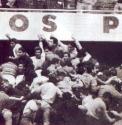 | Estadio Nacional (Lima – 1964): When the referee cancelled a goal in the last minute of a Peru vs Argentina qualifying match, an angered fan entered the pitch chasing the referee. The police aggressively beat him down, which angered fans in the stands and led to rioting. The police then fired tear gas in the stands, which caused chaos, stampedes and crushes, and led to the death of over 300 people. It is the worst recorded stadium disaster in history. |
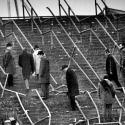 | Ibrox Stadium (Glasgow – 1971): A total of 66 Rangers fans were killed and over 200 injured in a crush during the last minutes of an Old Firm match. The incident happened when (presumably) someone fell on the staircases while exiting the stadium. This caused a chain reaction of falling people and resulted in a pile-up of bodies. |
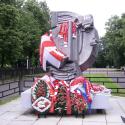 | Luzhniki Stadium (Moscow – 1982): In the dying seconds of a UEFA Cup match between FC Spartak and Dutch side Haarlem a large number of people started rushing toward the exit to get to the metro before the rest of the crowd. Witnesses suggest that someone fell on the staircases and the resulting crush and domino effect caused a pile-up of people. A total of 66 people died in the crush, figures that only came out in 1989. |
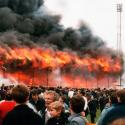 | Valley Parade (Bradford – 1985): A blaze engulfed the main stand of Bradford’s Valley Parade during a third division match, killing 56 fans and injuring 265 more. The fire had been facilitated by the stand’s wooden structure and accumulated debris and garbage underneath the stand. It is likely that a discarded match or cigarette started the fire. |
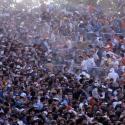 | Heysel Stadium (Brussels – 1985): Riots broke out before the 1985 European Cup final that was held at the Heysel Stadium. When Liverpool fans charged a group of Juventus fans the latter were pushed toward a side perimeter wall. Trying to climb over the wall it collapsed and 39 fans died. Though the match continued to get played, the incident led to a 5-year ban of English teams in Europe. |
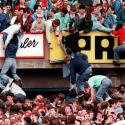 | Hillsborough (Sheffield – 1989): 96 Liverpool fans died in a crush at the start of a semi-final FA Cup tie with Nottingham Forest. The crush was a result of poor crowd management and police control which led to too many fans entering the central pens instead of being divided over all pens. The subsequent Taylor Report had far-reaching consequences for the design of English football stadiums. |
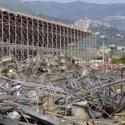 | Stade Furiani (Bastia – 1992): 18 people died and hundreds more were injured when the top of a temporary stand collapsed before the start of a Coupe de France semi-final between SC Bastia and Olympique de Marseille. The subsequent investigation reported multiple engineering errors, safety breaches, poor planning, and poor safety management as part of the causes. Read more about this disaster in our featured article. |
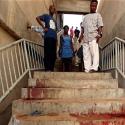 | Accra Sports Stadium (Accra – 2001): Crowd trouble broke out at the end of a league match between Accra Hearts and Asante Kotoko, which had the police fire tear gas into the stands. The resulting stampede and crushes led to the death of 127 fans. It is the worst recorded stadium disaster in African history. |
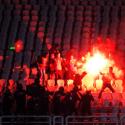 | Port Said Stadium (Port Said – 2012): Following the final whistle of a league match between Al-Masry and Al-Ahly hundreds of Al-Masry fans entered the pitch, attacked the Al-Ahly players, and next the Al-Ahly fans. In the subsequent chase and fights an estimated 79 Al-Ahly fans got killed. After the incident doubts were raised about the passive or even facilitating role of the Port Said police. Read our article after the incident here. |